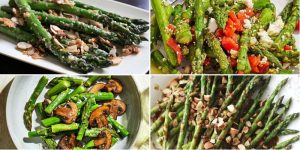A surprisingly sophisticated dessert that transforms simple ingredients into a nutritional powerhouse, milk jelly offers a guilt-free indulgence perfect for health-conscious food lovers. This elegant treat combines the creamy richness of dairy with the delicate texture of gelatin, creating a dessert that satisfies sweet cravings while delivering substantial protein and calcium benefits.
Why This Recipe Works
- The combination of grass-fed whole milk and pure gelatin creates a perfect protein matrix that supports muscle repair and joint health while providing sustained energy release throughout the day.
- Using raw honey as the primary sweetener introduces natural enzymes and antioxidants that processed sugars lack, while the vanilla extract adds depth without artificial flavors that can trigger inflammatory responses.
- This recipe’s cold-set method preserves the nutritional integrity of the ingredients, maintaining heat-sensitive nutrients like B vitamins and enzymes that support digestive health and metabolic function.
- The inclusion of sea salt enhances mineral absorption and balances electrolytes, making this dessert not just tasty but functionally beneficial for maintaining proper hydration and nerve function.
- Strategic chilling times allow for optimal texture development while giving the gelatin adequate time to form collagen-rich bonds that support skin elasticity and gut lining integrity.
Ingredients
- 4 cups whole milk (preferably grass-fed for higher omega-3 content)
- 2 tablespoons unflavored gelatin powder (grass-fed source recommended)
- 1/4 cup raw honey (local varieties provide allergy-fighting benefits)
- 2 teaspoons pure vanilla extract (alcohol-free preserves delicate compounds)
- 1/4 teaspoon sea salt (fine grind ensures even distribution)
- Fresh berries for serving (antioxidant-rich options like blueberries or raspberries)
Equipment Needed
- Medium saucepan (stainless steel preferred for even heating)
- Whisk (preferably silicone-coated to prevent scratching)
- Measuring cups and spoons
- 8×8 inch baking dish or individual serving molds
- Fine-mesh strainer
- Rubber spatula
- Refrigerator with stable temperature control
Instructions

Bloom the Gelatin for Optimal Activation
Begin by sprinkling 2 tablespoons of unflavored gelatin powder evenly over 1/2 cup of cold whole milk in your medium saucepan. Allow this mixture to sit undisturbed for precisely 5 minutes to properly bloom the gelatin, which is crucial for achieving the perfect jelly texture. During this resting period, the gelatin granules will absorb the liquid and swell, creating a spongy mass that will dissolve smoothly when heated. This blooming process prevents clumping and ensures even distribution throughout the final product, which is essential for consistent texture in every bite. The cold milk temperature is critical here because warm liquid would cause the gelatin to dissolve prematurely, compromising its setting power and resulting in a weaker gel structure that lacks the desired firmness. Proper blooming also maximizes the gelatin’s collagen content bioavailability, making those joint-supporting and skin-enhancing benefits more accessible to your body upon consumption.
Gently Warm the Milk Base
Place the saucepan with the bloomed gelatin over low heat and gradually warm the mixture while constantly whisking in a gentle, circular motion. Continue heating until the gelatin completely dissolves and the mixture reaches approximately 120°F, which you can verify with an instant-read thermometer. At this stage, slowly pour in the remaining 3 1/2 cups of whole milk while maintaining your gentle whisking motion to create a homogeneous liquid. The low temperature is vital for preserving the delicate proteins and enzymes in both the milk and honey you’ll add next. Heating beyond 140°F would denature these valuable compounds, reducing their nutritional benefits and potentially creating a cooked milk flavor that overwhelms the delicate vanilla notes. This controlled warming approach also prevents the formation of skin on the milk’s surface, ensuring your final jelly has a perfectly smooth, velvety texture without any unpleasant film.
Incorporate Flavor Enhancers and Sweeteners
Remove the saucepan from heat and whisk in 1/4 cup of raw honey, 2 teaspoons of pure vanilla extract, and 1/4 teaspoon of fine sea salt until fully incorporated. The honey should dissolve completely into the warm milk mixture, creating a uniform sweetness throughout. The vanilla extract adds aromatic complexity while the sea salt enhances flavor perception and aids in mineral absorption. Raw honey is preferred here because its natural enzymes and antioxidants remain intact when added after heating, providing digestive benefits and anti-inflammatory properties that processed sugars lack. The sea salt not only balances the sweetness but also provides trace minerals like magnesium and potassium that support electrolyte balance. For optimal flavor distribution, continue whisking for an additional minute after all ingredients appear combined to ensure no honey settles at the bottom of your pan.
Strain and Transfer to Setting Container
Position your fine-mesh strainer over the 8×8 inch baking dish or individual serving molds and carefully pour the milk mixture through to catch any undissolved gelatin particles or potential impurities. Use a rubber spatula to gently press any remaining liquid through the strainer, being careful not to incorporate air bubbles that could mar the jelly’s smooth surface. This straining step is crucial for achieving the signature glass-like clarity of professional-quality milk jelly and ensures a consistently silky mouthfeel without any graininess. If using individual molds, fill them to within 1/4 inch of the rim to allow for easy handling once set. For a decorative touch, you can arrange fresh berry slices at the bottom of clear containers before pouring the milk mixture over them.
Chill to Perfect Set Consistency
Carefully transfer the filled container to your refrigerator and allow it to chill undisturbed for at least 4 hours, though overnight setting is recommended for optimal texture development. The ideal refrigerator temperature for proper gelling is between 34-38°F, as temperatures above 40°F will significantly slow the setting process. During this chilling period, the gelatin molecules form a three-dimensional network that traps the liquid milk, creating the characteristic jiggly texture. For the cleanest cuts when serving, ensure the jelly is fully set by testing the center with a clean finger—it should spring back immediately without sticking. The extended chilling time also allows the flavors to meld beautifully, with the vanilla notes becoming more pronounced and the honey sweetness mellowing into a delicate background note.
Serve with Nutritional Enhancements
Once fully set, remove the milk jelly from the refrigerator and use a thin, sharp knife dipped in hot water to create clean cuts for serving. For individual portions, briefly dip the bottom of each mold in warm water for 10-15 seconds to loosen the jelly before inverting onto serving plates. Garnish with fresh berries that provide complementary antioxidants and natural sweetness, creating a nutritionally balanced dessert. The vitamin C in berries enhances iron absorption from the milk, while the fiber supports healthy digestion alongside the gelatin’s gut-healing properties. Serve immediately after cutting to maintain the perfect texture, as milk jelly can become watery if left at room temperature for extended periods. The contrast between the cool, creamy jelly and fresh fruit creates a sophisticated dessert experience that feels indulgent while delivering substantial health benefits.
Tips and Tricks
For those seeking to elevate their milk jelly game, several advanced techniques can transform this simple dessert into a culinary masterpiece. When selecting your gelatin source, prioritize grass-fed bovine gelatin for its superior amino acid profile and higher concentration of glycine and proline, which support collagen production and joint health more effectively than conventional options. If you prefer a vegetarian alternative, agar-agar can substitute for gelatin at a 1:1 ratio by weight, though the texture will be slightly firmer and more brittle—soak the agar flakes in cold milk for 15 minutes before heating to ensure proper hydration. For a creamier texture reminiscent of panna cotta, replace one cup of milk with heavy cream, though this increases the saturated fat content substantially, so reserve this variation for occasional indulgence rather than regular consumption.
Temperature control throughout the process cannot be overstated—use an instant-read thermometer to ensure you never exceed 120°F when dissolving the gelatin, as higher temperatures break down the protein structures responsible for the perfect gel. If your kitchen is particularly warm, place your setting container in the coldest part of the refrigerator, typically the bottom shelf toward the back, and avoid opening the door frequently during the initial setting phase. For crystal-clear jelly free of air bubbles, after straining, gently drag a toothpick across the surface to pop any remaining bubbles before chilling. If you’re making this recipe for children or those with sensitive palates, reduce the honey to 3 tablespoons and increase the vanilla to 1 tablespoon for a milder sweetness with enhanced aroma.
Presentation matters for both visual appeal and nutritional optimization—serve milk jelly in clear glass containers to showcase its elegant appearance, and pair with seasonal fruits that complement its nutritional profile. Summer berries provide antioxidants, while winter citrus adds vitamin C that enhances iron absorption from the milk. For a professional finish, warm your knife blade between cuts by dipping it in hot water and wiping it dry, creating museum-quality edges on each portion. If you need to make this recipe ahead for entertaining, it keeps beautifully for up to 3 days when covered tightly with plastic wrap pressed directly onto the surface to prevent skin formation. For those monitoring blood sugar, the honey can be reduced to 2 tablespoons without compromising texture, though the sweetness will be very subtle—supplement with cinnamon or nutmeg to enhance perceived sweetness through spice aromatics.
Recipe Variations
- Matcha Green Tea Milk Jelly: Whisk 2 tablespoons of ceremonial-grade matcha powder into the warm milk mixture after removing from heat. The matcha provides powerful antioxidants called catechins that support metabolic health and cognitive function. This variation offers a sophisticated flavor profile with the added benefit of natural caffeine for gentle energy without jitters. The vibrant green color makes for stunning presentation, and the slightly bitter notes of high-quality matcha balance the honey sweetness beautifully.
- Tropical Coconut Milk Jelly: Replace 2 cups of whole milk with full-fat coconut milk and add 1/4 cup of unsweetened shredded coconut to the mixture before straining. The medium-chain triglycerides in coconut milk provide readily available energy and support ketone production, while the coconut flesh adds fiber and texture. This dairy-free version accommodates those with lactose intolerance while delivering unique tropical flavors. Garnish with toasted coconut flakes and mango slices for a vacation-inspired treat.
- Protein-Enhanced Berry Swirl Jelly: Prepare the base recipe as directed, but before chilling, swirl in 1/2 cup of mashed fresh berries mixed with 1 scoop of unflavored collagen peptides or vanilla protein powder. This variation significantly boosts the protein content, making it an excellent post-workout recovery option or satiating breakfast alternative. The berry swirl adds natural fruit sugars and additional antioxidants while creating a marbled visual effect that elevates the presentation.
- Spiced Chai Milk Jelly: Steep 2 chai tea bags in the warm milk mixture for 10 minutes after dissolving the gelatin, then remove before adding honey and vanilla. The spices in chai—cinnamon, cardamom, ginger, and cloves—provide anti-inflammatory benefits and digestive support while creating a warming flavor profile perfect for cooler months. This variation contains natural thermogenic compounds that can slightly increase metabolic rate while satisfying sweet cravings with complexity rather than sheer sweetness.
Frequently Asked Questions
Can I use plant-based milk alternatives in this recipe?
Yes, though the results will vary significantly depending on the milk alternative you choose. Almond milk creates a lighter, more delicate jelly with fewer calories but less creaminess, while oat milk provides a richer texture closer to dairy but may require additional gelatin for proper setting due to its enzyme content. Coconut milk offers the most similar fat content to whole milk and sets beautifully, though it will impart a distinct tropical flavor. Soy milk works well nutritionally with its complete protein profile, but may develop a bean-like aftertaste if overheated. When using plant milks, increase gelatin by 1/2 tablespoon to compensate for their different protein structures, and avoid carrageenan-containing varieties as this additive can interfere with proper gelling. Always choose unsweetened versions to control the sugar content yourself.
Why did my milk jelly not set properly?
Several factors can prevent proper setting, with temperature being the most common culprit. If your mixture exceeded 140°F during preparation, the gelatin’s setting power becomes compromised, requiring additional chilling time or supplemental gelatin. Inadequate blooming time—less than 5 minutes—can leave undissolved granules that fail to incorporate properly into the gel matrix. High acidity from certain additions like citrus juice can also interfere with setting, as can pineapple and papaya which contain enzymes that break down gelatin. If your jelly remains liquid after 6 hours, gently rewarm it to 110°F and whisk in an additional tablespoon of bloomed gelatin, then rechill. Always ensure your refrigerator maintains temperatures below 40°F, as warmer conditions dramatically slow the gelling process.
What are the primary health benefits of milk jelly?
Milk jelly offers a unique combination of benefits from its core ingredients. The grass-fed gelatin provides collagen that supports joint health, skin elasticity, and gut lining integrity, while the amino acids glycine and proline aid in detoxification and tissue repair. Whole milk delivers high-quality protein for muscle maintenance, calcium for bone density, and vitamin D for immune function when fortified. Raw honey contributes enzymes that support digestion and antioxidants that combat oxidative stress, while vanilla contains small amounts of B vitamins that support energy production. Together, these components create a dessert that supports rather than derails health goals, providing sustained energy release without blood sugar spikes thanks to the protein-fat combination that slows carbohydrate absorption.
Can I make this recipe sugar-free for diabetic diets?
Absolutely, though the texture may be slightly affected since sugar contributes to mouthfeel beyond just sweetness. Replace the honey with 1/4 cup of erythritol or monk fruit sweetener, which provide sweetness without impacting blood glucose levels. Alternatively, use 1/2 teaspoon of pure stevia extract, though be cautious as some people detect a bitter aftertaste with stevia. Without the hygroscopic properties of honey, sugar-free versions may firm up slightly more, so consider reducing the gelatin by 1/2 teaspoon for a softer set. Enhance flavor complexity with additions like cinnamon, almond extract, or citrus zest to compensate for the missing honey notes. Always consult with a healthcare provider regarding appropriate sweetener choices for specific medical conditions.
Summary
This sophisticated milk jelly transforms simple ingredients into a nutritionally balanced dessert that supports joint health, provides sustained energy, and satisfies sweet cravings without refined sugars. With proper technique and quality ingredients, it delivers both culinary elegance and substantive health benefits in every silky spoonful.
Milk Jelly
5
servings15
minutes10
minutesIngredients
Instructions
- 1 Sprinkle gelatin over 1/2 cup cold milk and bloom for 5 minutes
- 2 Warm over low heat to 120°F, whisking until gelatin dissolves
- 3 Whisk in remaining milk, then remove from heat
- 4 Add honey, vanilla, and salt, whisking until fully incorporated
- 5 Strain mixture into container and chill 4+ hours until set
- 6 Cut and serve with fresh berries



